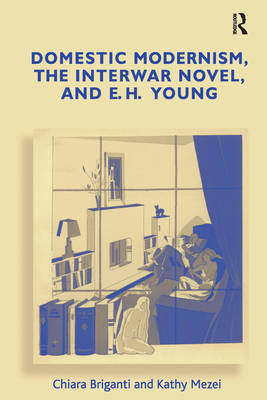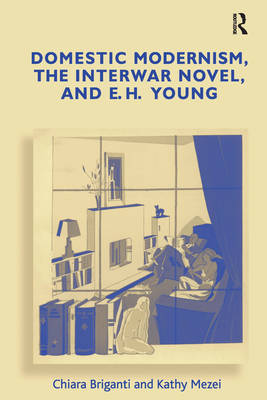
- Afhalen na 1 uur in een winkel met voorraad
- Gratis thuislevering in België vanaf € 30
- Ruim aanbod met 7 miljoen producten
- Afhalen na 1 uur in een winkel met voorraad
- Gratis thuislevering in België vanaf € 30
- Ruim aanbod met 7 miljoen producten
Zoeken
Domestic Modernism, the Interwar Novel, and E.H. Young
Chiara Briganti, Kathy Mezei
Hardcover | Engels
€ 202,95
+ 405 punten
Uitvoering
Omschrijving
Domestic Modernism, the Interwar Novel, and E. H. Young provides a valuable analytical model for reading a large body of modernist works by women, who have suffered not only from a lack of critical attention but from the assumption that experimental modernist techniques are the only expression of the modern. In the process of documenting the publication and reception history of E. H. Young's novels, the authors suggest a paradigm for analyzing the situation of women writers during the interwar years. Their discussion of Young in the context of both canonical and noncanonical writers challenges the generic label and literary status of the domestic novel, as well as facile assumptions about popular and middlebrow fiction, canon formation, aesthetic value, and modernity. The authors also make a significant contribution to discussions of the everyday and to the burgeoning field of 'homeculture, ' as they show that the fictional embodiment and inscription of home by writers such as Young, Virginia Woolf, Elizabeth Bowen, Ivy Compton-Burnett, Lettice Cooper, E. M. Delafield, Stella Gibbons, Storm Jameson, and E. Arnot Robertson epitomize the long-standing symbiosis between architecture and literature, or more specifically, between the house and the novel.
Specificaties
Betrokkenen
- Auteur(s):
- Uitgeverij:
Inhoud
- Aantal bladzijden:
- 224
- Taal:
- Engels
Eigenschappen
- Productcode (EAN):
- 9780754653172
- Verschijningsdatum:
- 28/05/2006
- Uitvoering:
- Hardcover
- Formaat:
- Genaaid
- Afmetingen:
- 156 mm x 233 mm
- Gewicht:
- 475 g

Alleen bij Standaard Boekhandel
+ 405 punten op je klantenkaart van Standaard Boekhandel
Beoordelingen
We publiceren alleen reviews die voldoen aan de voorwaarden voor reviews. Bekijk onze voorwaarden voor reviews.











